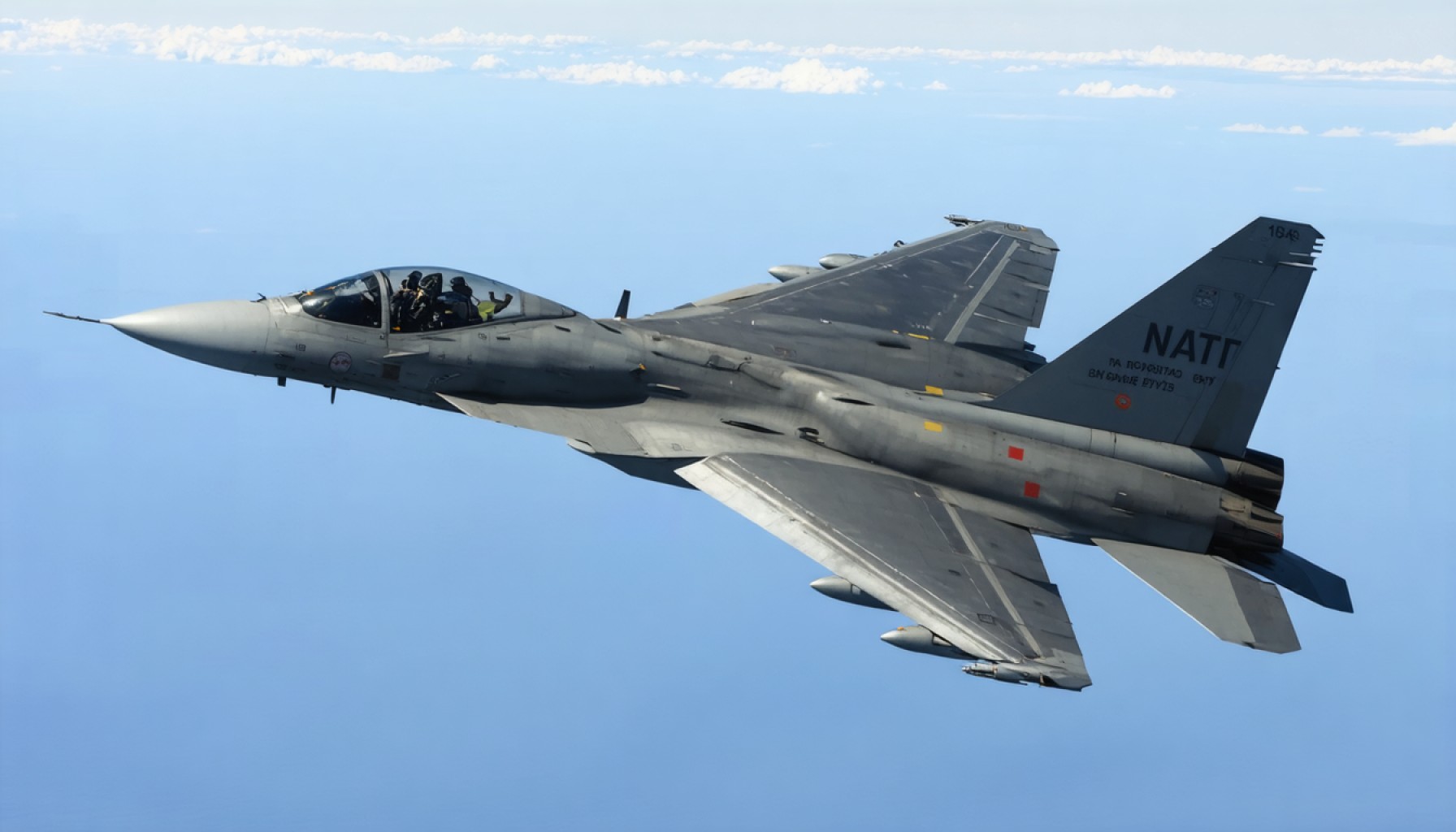- Sweden has joined NATO as an active participant, showcasing its commitment by deploying Saab JAS 39 Gripen fighter jets over NATO airspace.
- Historically neutral, Sweden balanced geopolitics with strong military readiness, drawing lessons from Finland’s Winter War.
- The deployment of six Gripens at Poland’s Malbork Air Base marks Sweden’s first combat aircraft patrol of NATO borders beyond its own territory.
- The JAS 39 Gripen is a highly versatile aircraft, capable of air-to-air combat and reconnaissance, emphasizing Swedish innovation.
- The collaboration between Sweden and Poland strengthens NATO’s strategic vision, highlighting a united mission for European security.
- Sweden demonstrates that alliances are reinforced by active military strategy and engagement, underscoring its pivotal role in promoting peace.
Sweden is sending a powerful message to the world: It is not simply a bystander in the NATO alliance. With the deployment of its Saab JAS 39 Gripen fighter jets over NATO airspace, Sweden is proving that its recent membership in the alliance is rooted in action and commitment. The skies above Poland now serve as a stage for Sweden’s bold embrace of its new role within NATO, showcasing a transformation that draws on a rich history of defense prowess.
For decades, Sweden maintained a policy of neutrality, mastering the delicate art of balancing geopolitics with a potent defense strategy. Their neutrality wasn’t passive; rather, it was underpinned by a robust military readiness reminiscent of the cold resilience demonstrated during Finland’s storied Winter War. Sweden’s Air Force, symbolized by earlier jets like the Viggen and Draken, has consistently been a powerhouse of innovation and strength.
Now, with the deployment of the JAS 39 Gripen, an aircraft engineered for agility and power, Sweden reaffirms its active role in collective defense. On a brisk morning, six Gripens landed with precision at Malbork Air Base in Poland, underscoring Sweden’s operational participation in NATO’s “enhanced Air Policing mission.” This marked the first instance where Swedish combat aircraft have patrolled the alliance’s borders beyond their own skies, demonstrating Sweden’s steadfast dedication to NATO’s collective security.
The Gripen itself is a marvel—a testament to Swedish engineering excellence. Since its maiden flight in 1988, the Gripen has been at the cutting edge of aerial warfare technology. As a multi-role fighter, it operates with seamless efficiency whether in air-to-air combat or reconnaissance missions. With a maximum speed of Mach 2 and impressive range, the Gripen can swiftly respond to threats and challenges, ensuring peace and stability in volatile regions.
Looking ahead, the cooperation between Sweden and Poland signals an important chapter in NATO’s strategic vision. The warm reception of Swedish defense minister Pål Jonson by his Polish counterpart Władysław Kosiniak-Kamysz stands as a beacon of solidarity and shared purpose within the alliance. Statements from such gatherings highlight the nations’ united mission to uphold peace and security across Europe—a testament to NATO’s enduring influence.
Sweden’s actions are a clear reminder that in an age of shifting global dynamics, commitment to alliances is not determined by words alone, but by decisive military strategy and steadfast participation. With the Gripen soaring through the skies of Poland, Sweden makes it unmistakable: it is a key player in the pursuit of peace.
Sweden’s Role in NATO: Beyond Borders with the Gripen Fighter Jets
Understanding Sweden’s Strategic Shift
Sweden’s recent deployment of its Saab JAS 39 Gripen fighter jets over NATO airspace marks a pivotal shift in the nation’s defense strategy. As a new member of NATO, Sweden is seamlessly transitioning from neutrality to active participation. This strategic move is not just about bolstering NATO’s defense capabilities but also represents a solid commitment to collective security in Europe.
Deep Dive into the Saab JAS 39 Gripen
1. Features & Specs:
– Speed & Agility: The Gripen boasts a maximum speed of Mach 2, allowing it to respond swiftly to emerging threats.
– Multi-Role Capability: It’s designed for both air-to-air combat and reconnaissance missions, showcasing versatility.
– Advanced Avionics: The aircraft features sophisticated avionics, enabling superior target tracking and engagement in various environments.
2. Market & Adoption:
– Global Presence: Beyond Sweden, countries like Brazil, Hungary, and South Africa operate the Gripen, highlighting its global appeal.
– Future Trends: As defense budgets expand globally, we can expect more nations to consider the Gripen due to its cost-effectiveness and adaptability.
The Cooperation with Poland: A Strategic Alliance
1. Real-World Use Cases:
– Enhanced Air Policing: The deployment in Poland exemplifies practical collective defense and is crucial in shielding NATO’s Eastern borders.
– Rapid Deployment: The Gripen’s ability to quickly reach and operate in diverse terrains emphasizes NATO’s readiness and flexibility.
2. Security and Sustainability:
– Eco-Conscious Design: The Gripen is known for its reduced environmental footprint compared to other fighter jets, aligning with modern sustainability goals.
Pros & Cons Overview
Pros:
– Cost-Effective: Compared to other fighter aircraft, the Gripen is relatively affordable, both in procurement and maintenance.
– Versatile Operations: Its ability to perform multiple roles makes it a valuable asset for any air force.
Cons:
– Limited Stealth Features: While advanced, the Gripen lacks some of the stealth capabilities found in newer fifth-generation fighters.
Pressing Questions Answered
Why did Sweden choose to join NATO now?
Sweden’s decision is driven by changing geopolitical dynamics, especially with increased military activities near its borders, necessitating stronger alliances.
How does the Gripen compare to other NATO fighter jets?
While less costly and slightly older than the latest American jets like the F-35, the Gripen’s versatility, ease of maintenance, and ability to integrate with various defense systems make it a competitive choice.
Actionable Tips for Enthusiasts
– Defense Analysts: Consider the Gripen’s adoption trends for insights into future air defense strategies.
– Military Enthusiasts: Explore documentaries and literature on the Gripen’s development to understand its impact on modern aerial warfare.
Conclusion
Sweden’s engagement with NATO, highlighted by the deployment of the Gripen fighter jets, underscores a transformative era in European defense cooperation. As global tensions evolve, Sweden’s decisive actions set an example of how nations can pivot towards effective collective security.
For more on Sweden’s defense strategies and technologies, visit the Swedish Armed Forces.







